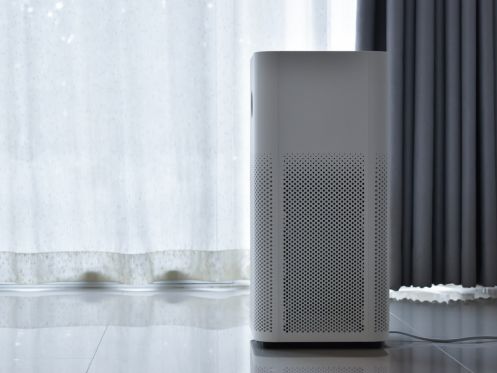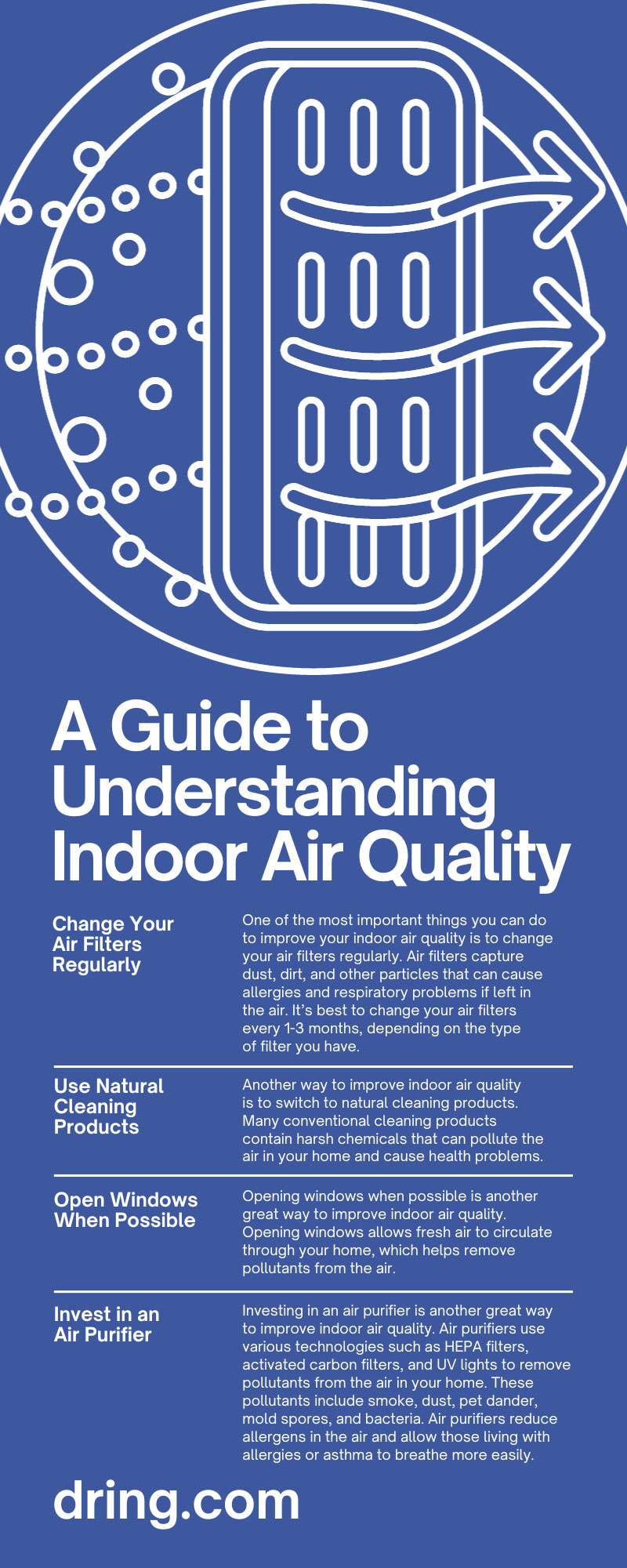Indoor air quality is one of the most important aspects of a healthy home, yet many homeowners, business owners, and property managers remain unaware of how this affects their health. With recent advances in technology, it’s now more affordable than ever to have clean air circulated throughout your living space for improved comfort levels and peace of mind.
If you have questions about the air in your home, read through this brief guide to better understand indoor air quality. It provides an overview of the different types of pollutants found in your indoor environment as well as powerful tools that can help you detect, monitor, and remediate these potential hazards.
Signs of Poor Indoor Air Quality
Indoor air quality can drastically impact the comfort and everyday routine of homes, businesses, and public facilities. It’s especially true when indoor air quality remains on the lower side. Explore some common signs of poor indoor air quality.
Musty Air Quality
A musty odor is one of the most common signs of poor indoor air quality. This odor often stems from the presence of mold or mildew, which thrive in areas with high humidity levels or poor ventilation.
Other causes of musty odors include water damage, animal droppings, and cigarette smoke. If you notice a musty odor, it is important to have a professional inspect the property to determine the source and take steps to improve your indoor air quality.
Dust Build-Up
Another sign of poor indoor air quality is excessive dust build-up on surfaces such as furniture and floors. Dust contains a variety of particles, including pet dander, pollen, bacteria, and other allergens that can cause health problems if inhaled over long periods. Vacuum regularly and use an air purifier to remove airborne particles from the air and reduce dust build-up in your home.
Allergies or Respiratory Issues
If you or someone in your home experiences allergies or asthma symptoms when indoors, this bodily reaction may indicate that contaminants in the air are causing these symptoms. Common sources of indoor air pollution include mold, pet dander, dust mites, and volatile organic compounds (VOCs). Consider using an air purifier with a HEPA filter to trap these particles and help reduce the pollutants in your home’s air.
Visible Mold
Mold growth contributes to poor indoor air quality and can cause serious health problems if left untreated. Mold growth usually occurs in areas with high humidity or water damage, such as around windows or pipes. If you notice any visible mold growth in your home, a professional must remove it immediately to prevent further health risks.
High Humidity Levels
High humidity levels can also be a sign of poor indoor air quality. High humidity allows for mold growth and brings about other contaminants that can cause health problems if breathed in for long periods.
The ideal indoor relative humidity level should sit between 30 percent and 50 percent. If you notice that the relative humidity level in your home is typically higher than this range, investing in a dehumidifier can reduce moisture levels and improve air quality.
Tips for Improving Indoor Air Quality
Understanding indoor air quality can drastically improve the overall comfort of your home or business establishment. Read on to learn some helpful tips for improving indoor air quality.
Change Your Air Filters Regularly
One of the most important things you can do to improve your indoor air quality is to change your air filters regularly. Air filters capture dust, dirt, and other particles that can cause allergies and respiratory problems if left in the air. It’s best to change your air filters every 1-3 months, depending on the type of filter you have.
Use Natural Cleaning Products
Another way to improve indoor air quality is to switch to natural cleaning products. Many conventional cleaning products contain harsh chemicals that can pollute the air in your home and cause health problems.
Furthermore, it can create an unsafe environment for pets and others with sensitivities. Natural cleaning products use plant-based ingredients and are much safer for both you and the environment.
Open Windows When Possible
Opening windows when possible is another great way to improve indoor air quality. Opening windows allows fresh air to circulate through your home, which helps remove pollutants from the air.
Furthermore, open windows can reduce the presence of airborne allergens such as pollen and dust mites. It’s best to open windows when there is no construction or traffic nearby, as this will help you prevent pollutants from entering your home.
Invest in an Air Purifier
Investing in an air purifier is another great way to improve indoor air quality. Air purifiers use various technologies such as HEPA filters, activated carbon filters, and UV lights to remove pollutants from the air in your home. These pollutants include smoke, dust, pet dander, mold spores, and bacteria. Air purifiers reduce allergens in the air and allow those living with allergies or asthma to breathe more easily.
Monitor Humidity Levels
Monitor humidity levels to maintain good indoor air quality as well. Too much humidity can encourage mold growth, while too little humidity can make it difficult for airborne particles such as pollen and dust mites to settle out of the air. Investing in a hygrometer is a great way to monitor humidity levels in your home so that you know when it’s time to adjust the levels accordingly.
Ventilation
Improving the ventilation in your home is one of the most effective ways to improve indoor air quality. The easiest way to improve ventilation is to open windows and doors when possible or use fans to draw fresh air into the room. Additionally, you can install an exhaust fan in rooms where moisture is likely to accumulate, such as bathrooms and kitchens.
Home maintenance and improving indoor air quality are key to living a comfortable life and being good stewards of the environment. Taking control of one’s home can seem daunting at times, but don’t forget that many resources are available to help get your home up to speed and feel comfortable. At Dring, we offer exceptional heating and cooling system repairs and services to ensure optimal comfort. Our AC duct cleaning in Carrollton helps minimize air pollutants and prevent airborne illnesses and allergic reactions. If you have any questions about our air conditioning and heating repairs, replacements, installations, and cleanings, contact us today.








